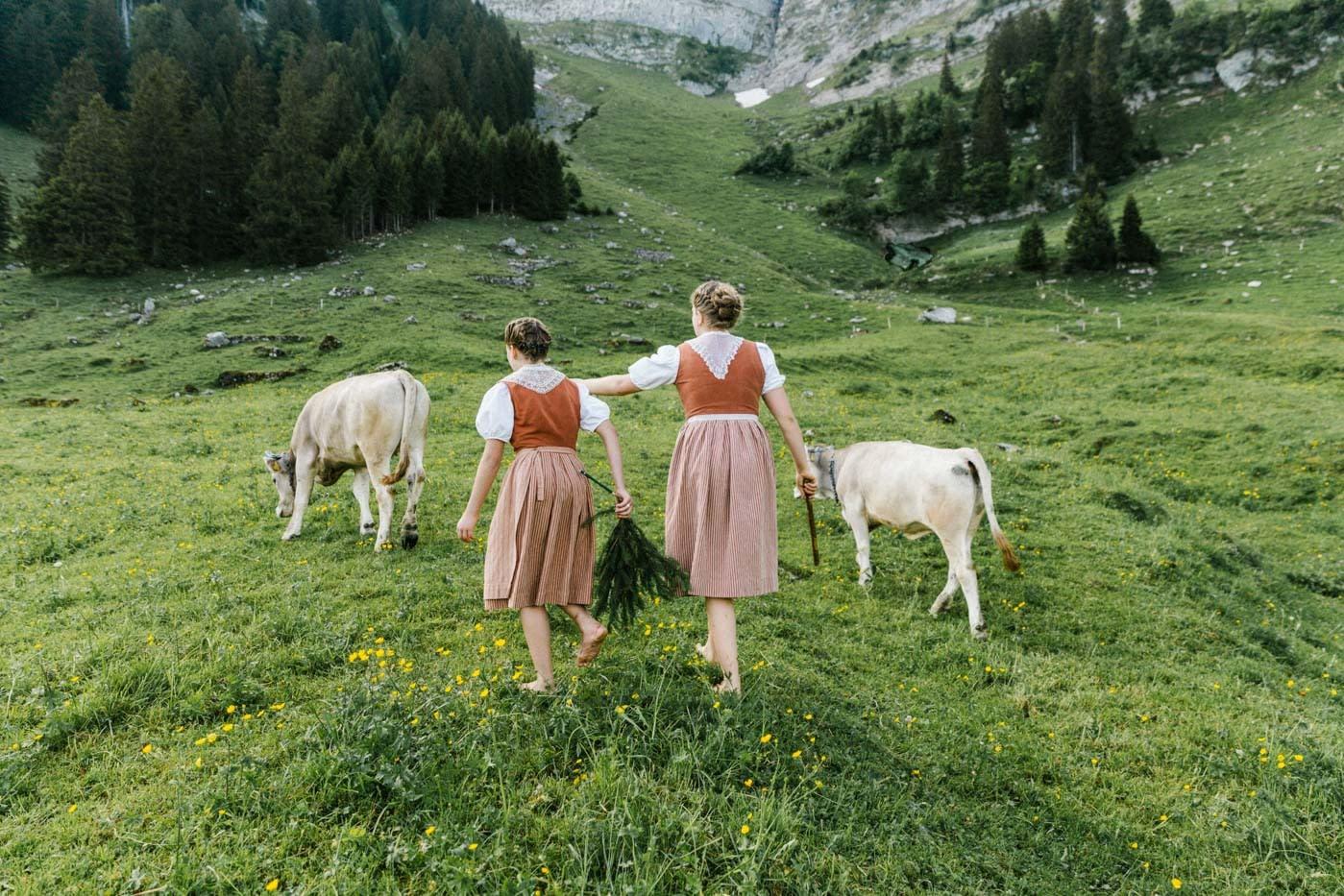Every fall in certain rural parts of Switzerland, Germany, and Austria, farming communities get together before the crack of dawn for an age-old ritual: bringing the cattle home from the mountain. Elaborate traditional costumes are donned by farming families and cows alike, and the cows are led down from the alps in a ceremonial procession that’s sometimes overseen by a tourist audience.
German photographer Damaris Riedinger visited Appenzell, Switzerland, her mother’s hometown, and got up at two in the morning to document the Alpabzug or Alpabfahrt, as the march is called in Swiss German.
I’ve watched the cattle processions since I was a little child. My mom is Swiss, and we would often drive from Germany to Switzerland to visit my grandparents. I always watched the procession from this isolated, singular, and quite touristic angle.
In the series Soleil Appenzell, I document the farmer Jakob and his family. I spent a few days documenting their life at their farm and then hiked with them up to their summer alp. It was a more immersive and intimate perspective on the tradition. Since the cattle drive is scheduled according to the weather, I called Jakob almost daily to get updates on whether or not the cattle drive was happening. My grandad also chimed in, “Rumor has it they will leave the alps in two weeks.” As farmers, they have a feel for weather, and both of their predictions turned out to be true. It was blue sky the day we hiked up.
Swiss farmers spent most of the summers up in their alps. An alp is like their smaller, second farm on higher altitude. Down in the valley, where the farmers live, the grass is not tall enough to feed their cows. So they pack up their things and march with the cows up to their summer alp. There, they produce mostly cheese. Going to the alp means leaving their home in the valley behind for about three months. Once summer is over, they come back down again.
When it comes to population, Appenzell Innerhoden is the smallest canton in Switzerland. And that shows in their community. Everybody seems to know everyone, word travels fast, and the sense of solidarity is strong. If you are a small group, you have to look after your traditions in order to keep them alive. The costumes are a symbol of a close and strong bond to their homeland. They wear them with pride and care.
The costumes for the alpine herdsmen and dairymen emerged in the 19th century. The cattle drive up and down to the alp became a very sacred ritual. They still pay a lot of attention to the correct composition of both men’s and women’s costumes. It is only because the community is so strict in preserving the details of the costumes and the corresponding accessories that this folk tradition was able to survive time, and is still so strongly rooted.
On the day of the cattle drive, we got up at two in the morning and had breakfast all together around a big table. Everyone who walked up had a task to fulfil. One person had to lead the bull, one was to lead the horse cart, others were assigned to keep the cows and goats on track. Although it was pitch black, everything went smoothly.
The men started chanting and yodelling, which directed the procession in an acoustic way. They all have such a strong bond to their cows. I remember the last few kilometers we hiked up, the hill was quite steep. Jakob’s nephews took the bells off the cows and carried them up themselves on a wooden yoke to relieve the cows of the weight. Just before we arrived, the animals knew they were home and started to run towards the green pastures.
See more of Damaris Riedinger’s work at her website, built using Format.
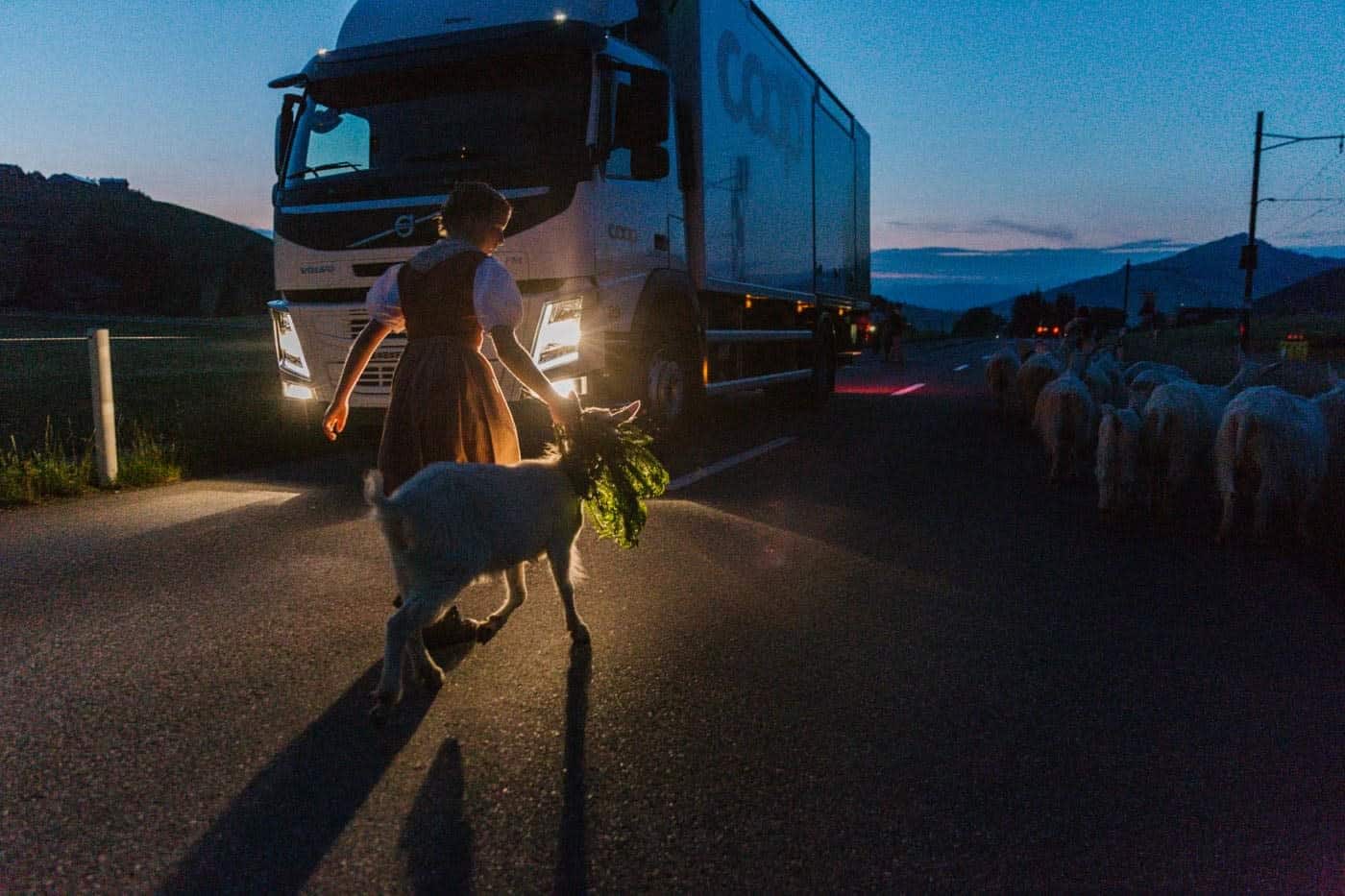
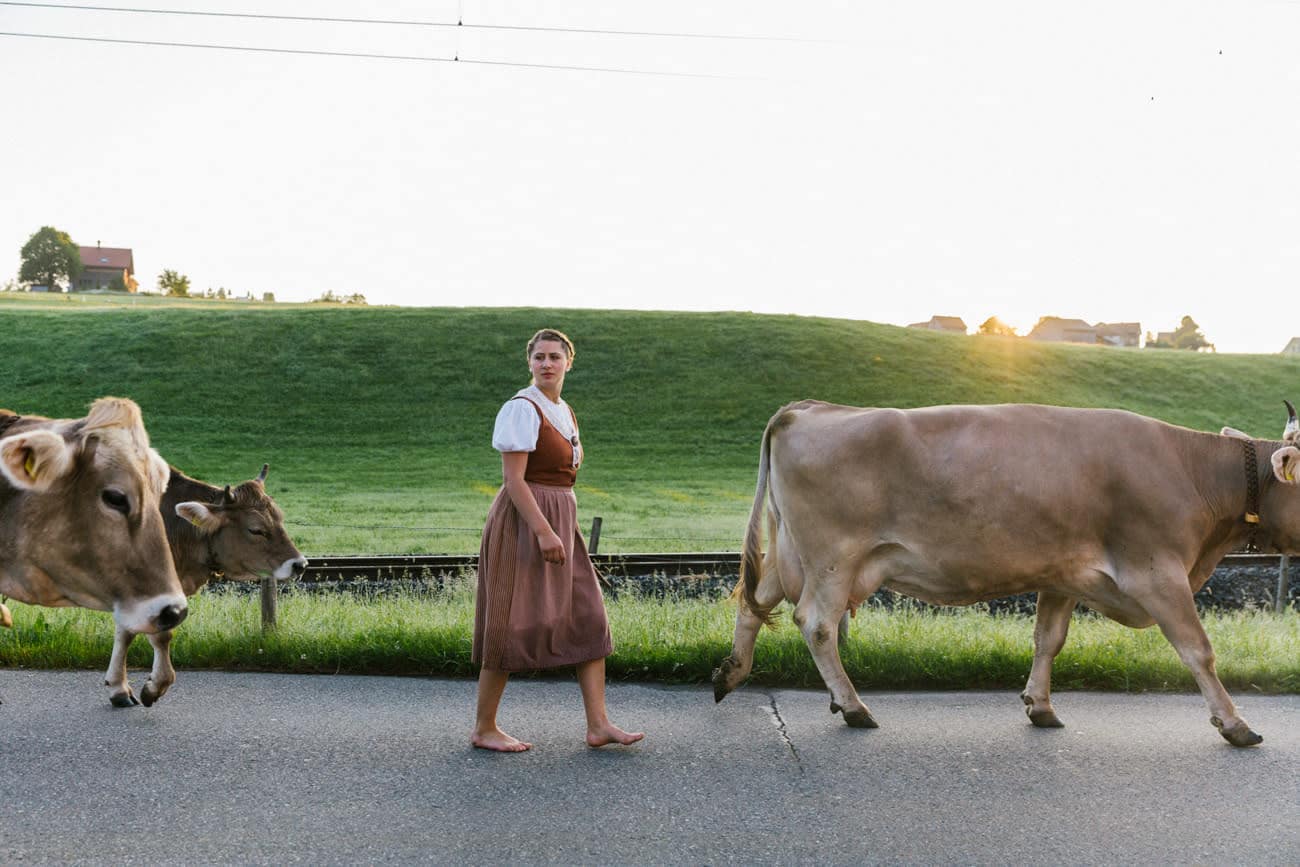
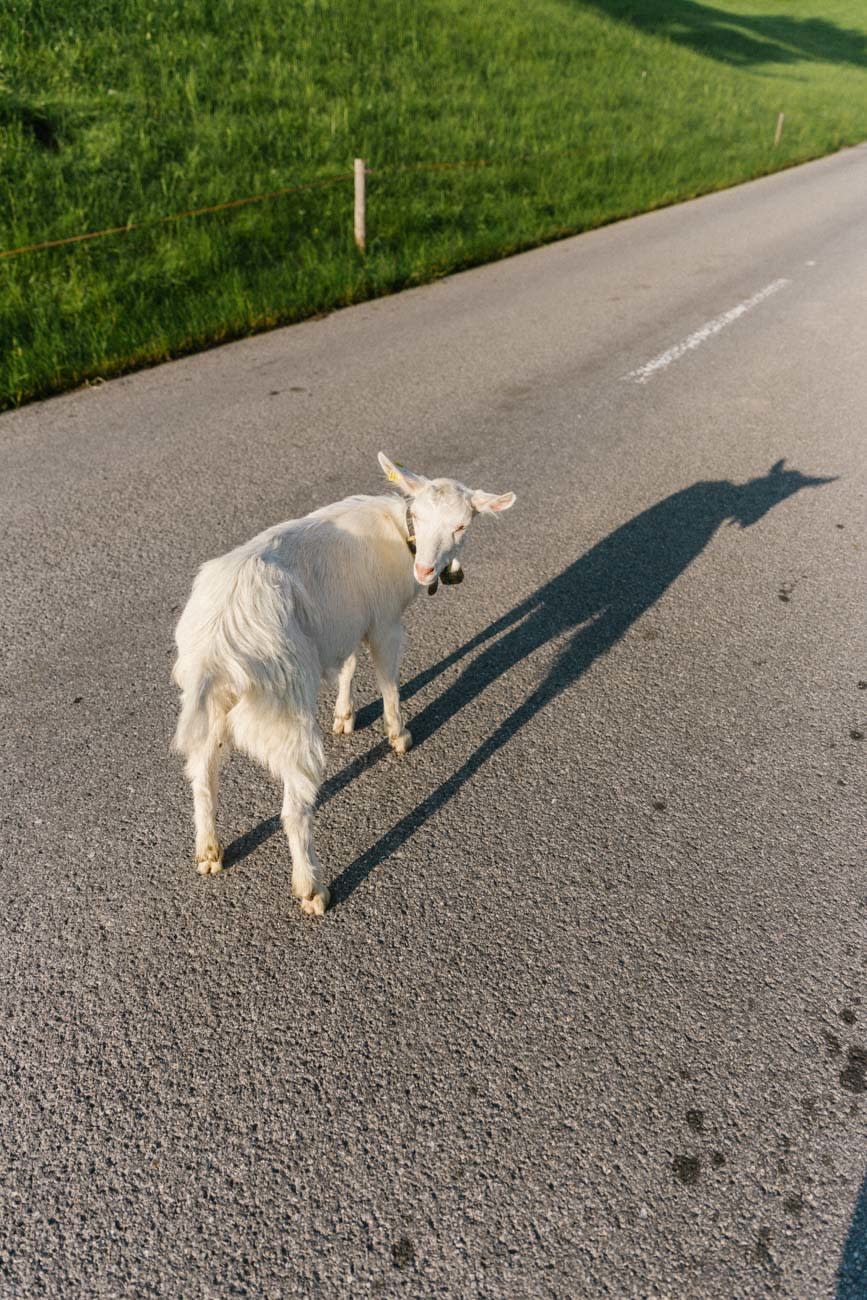
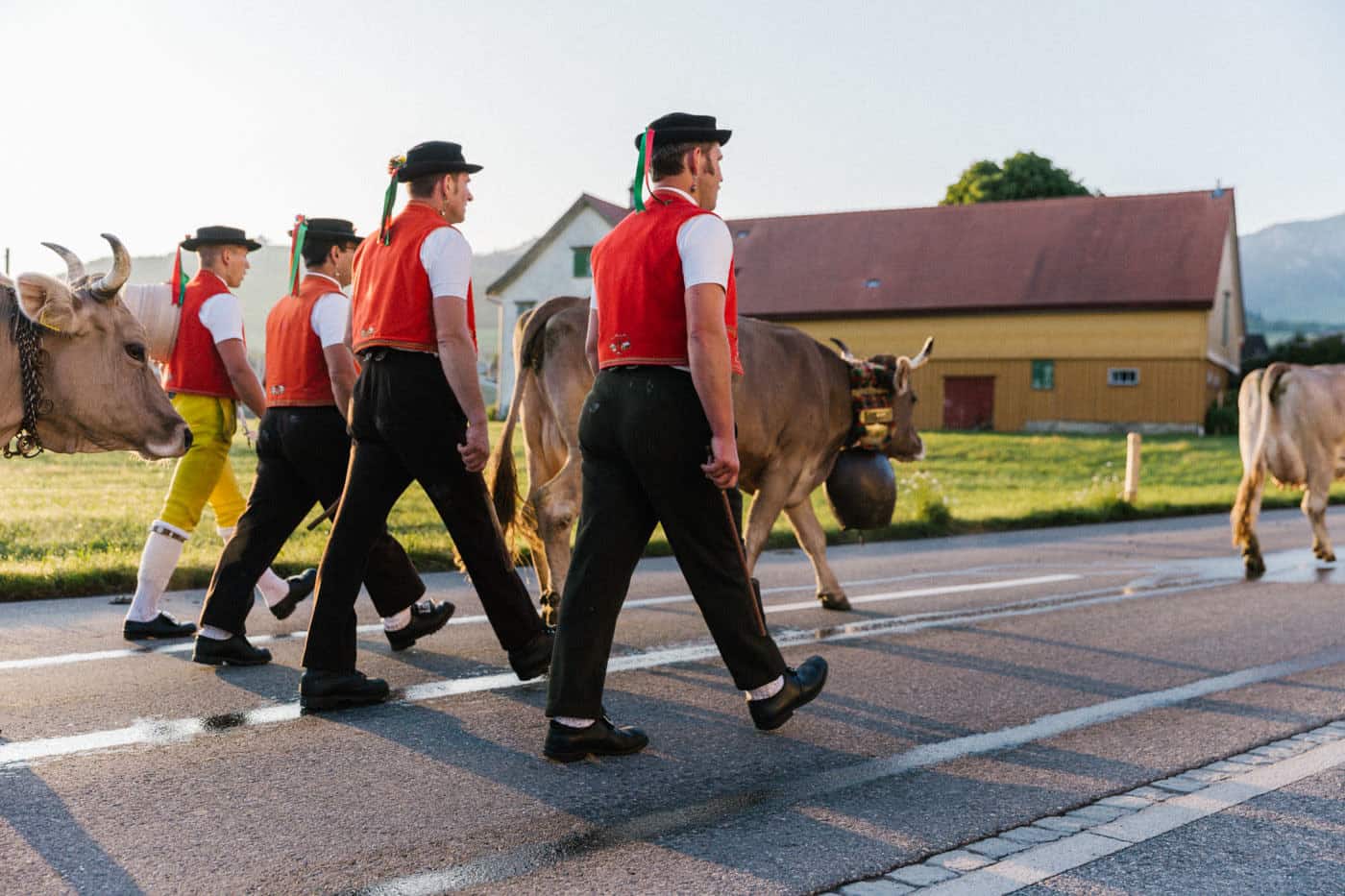
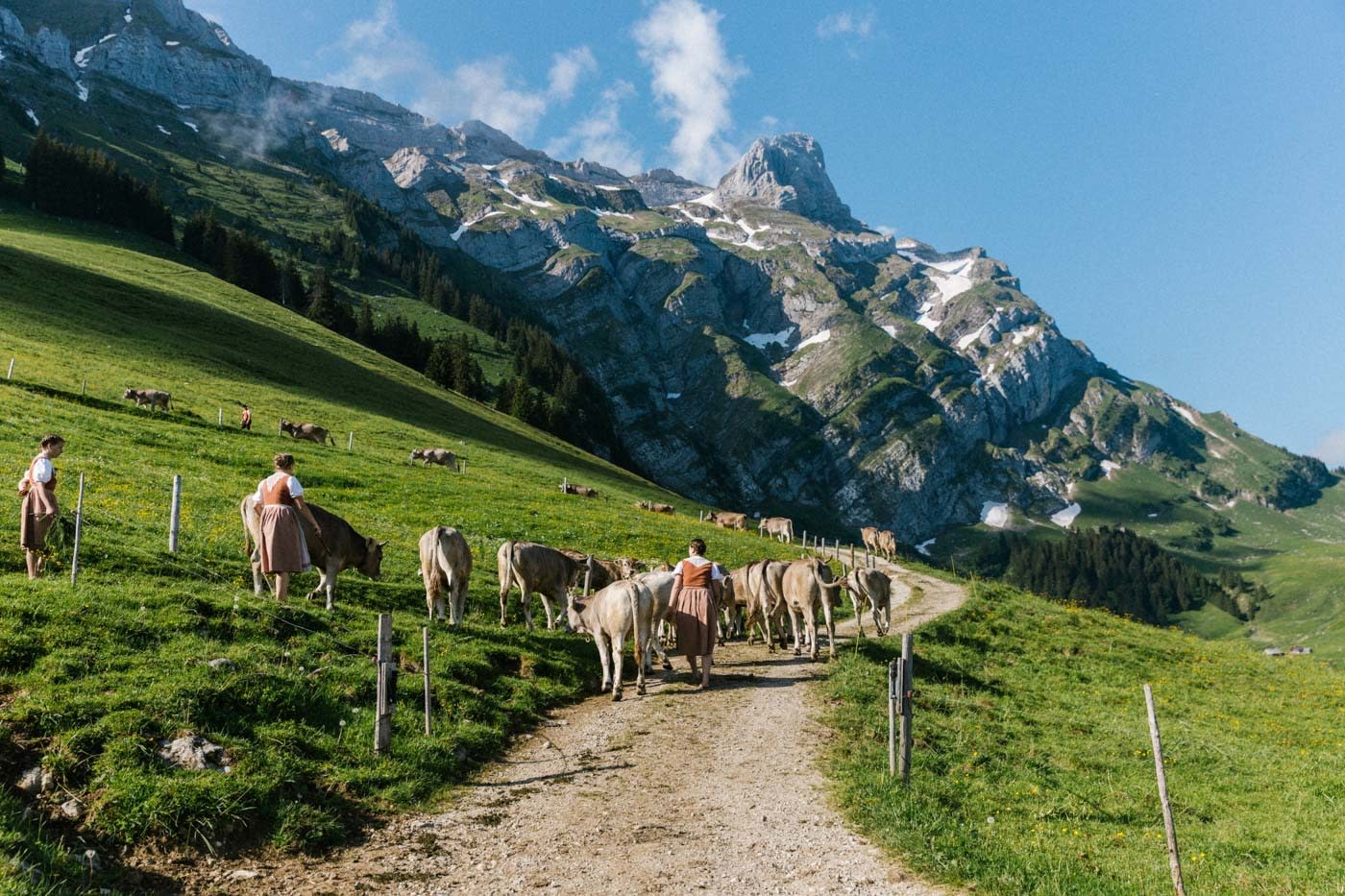
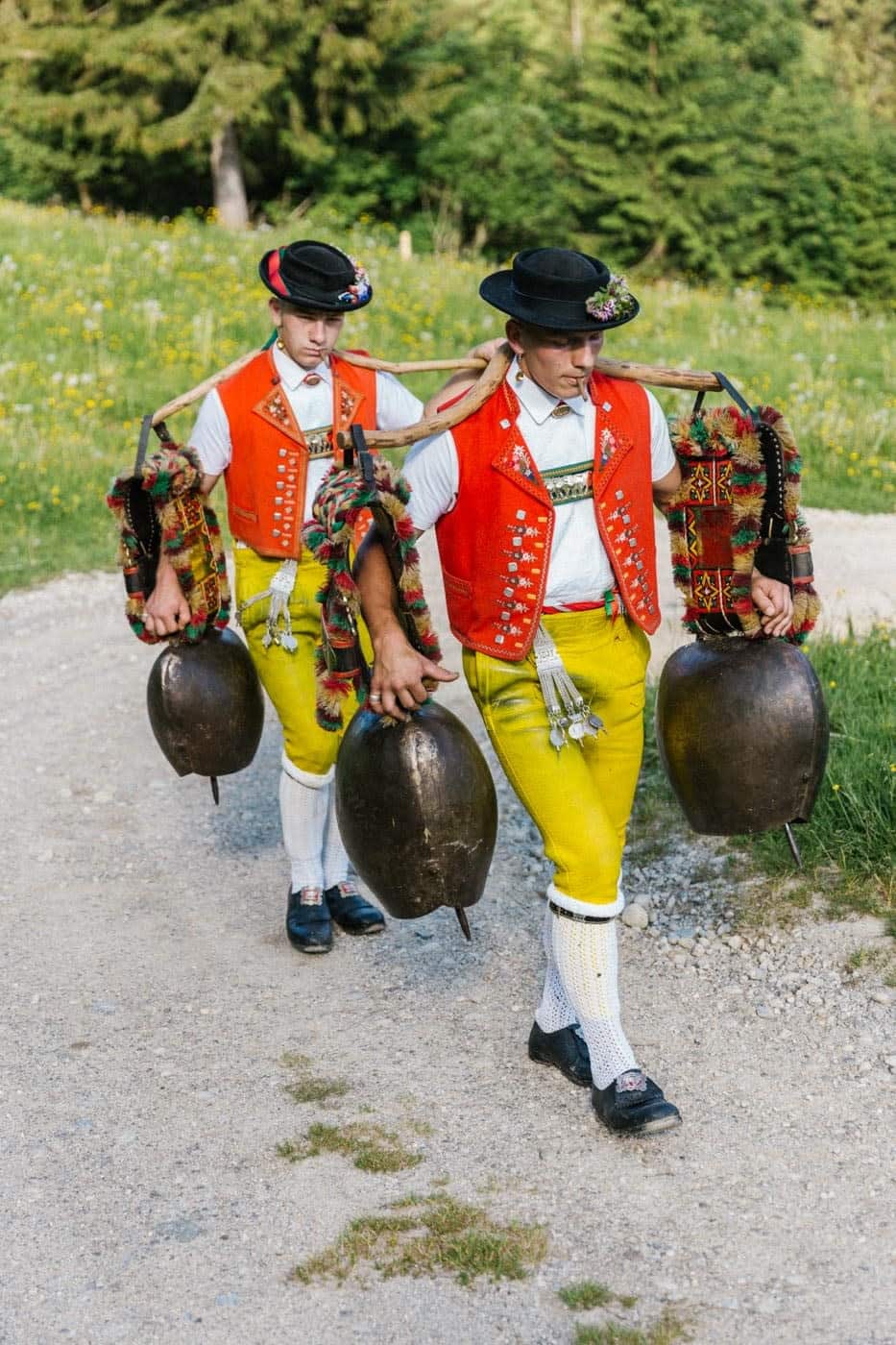
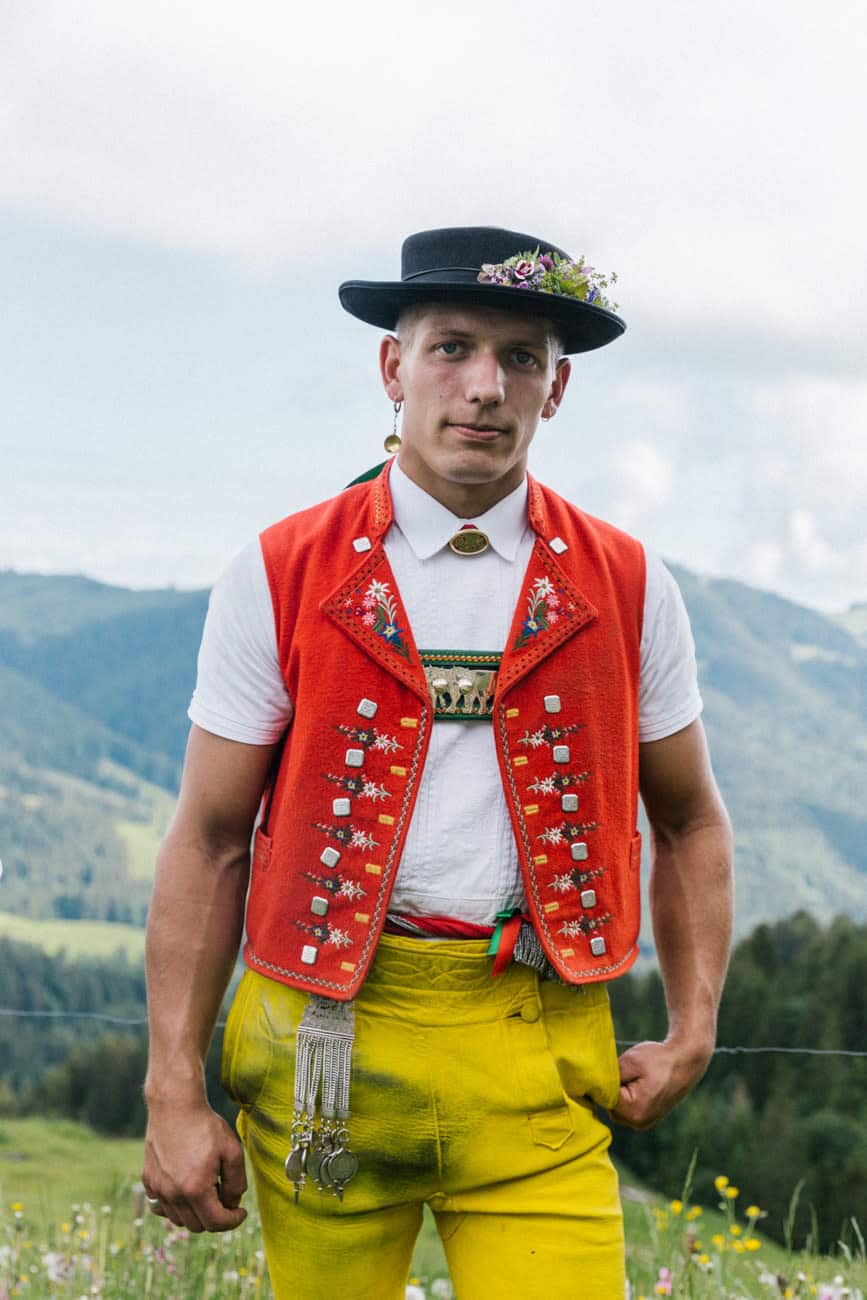
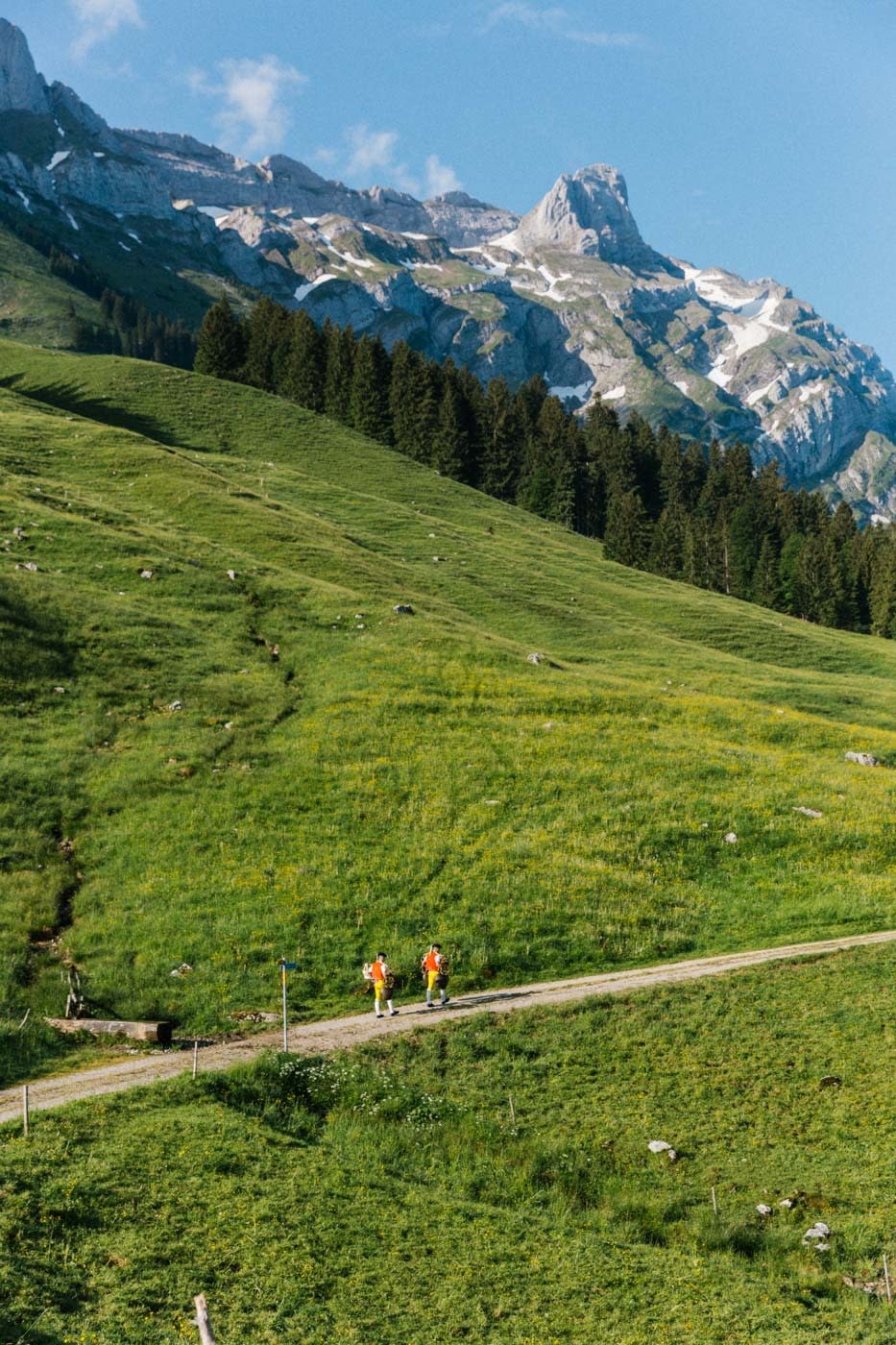
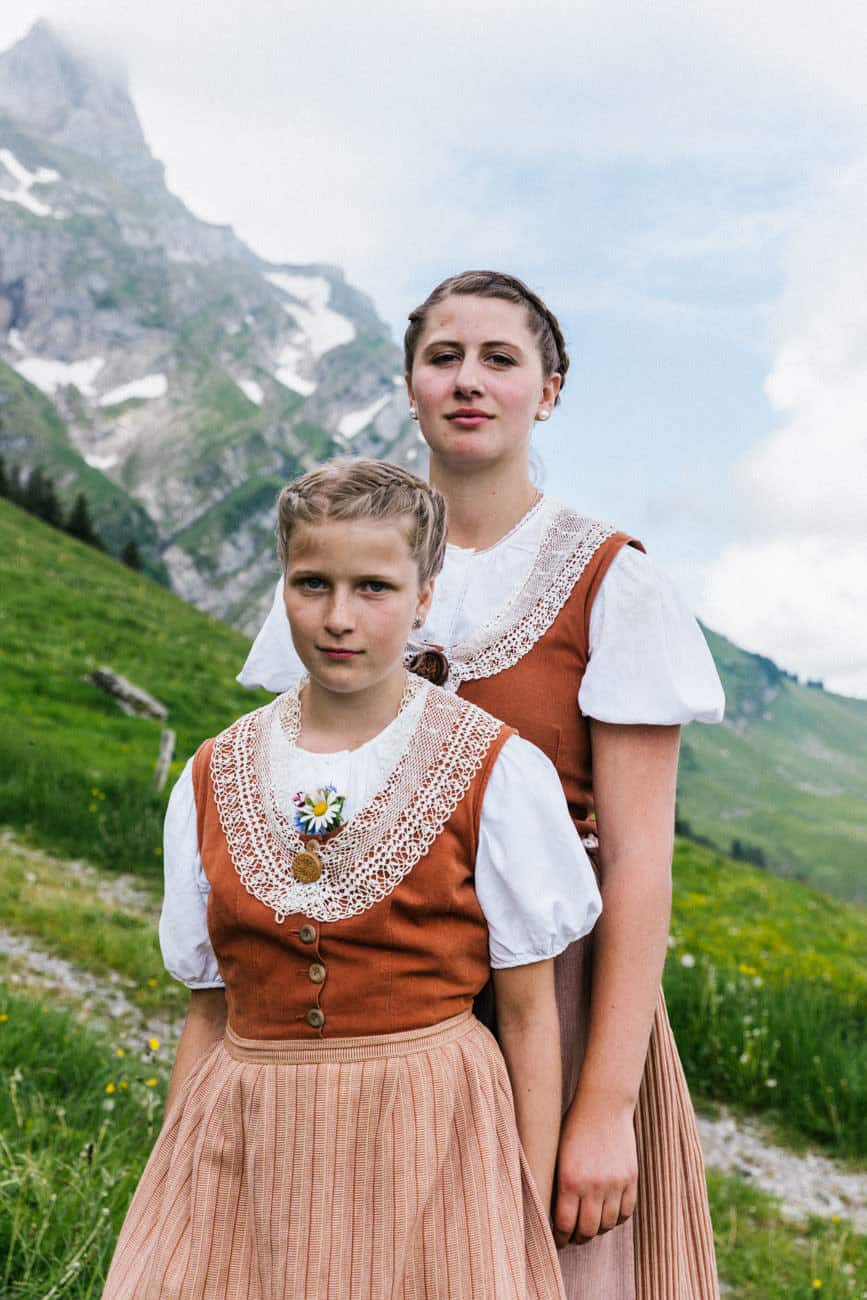
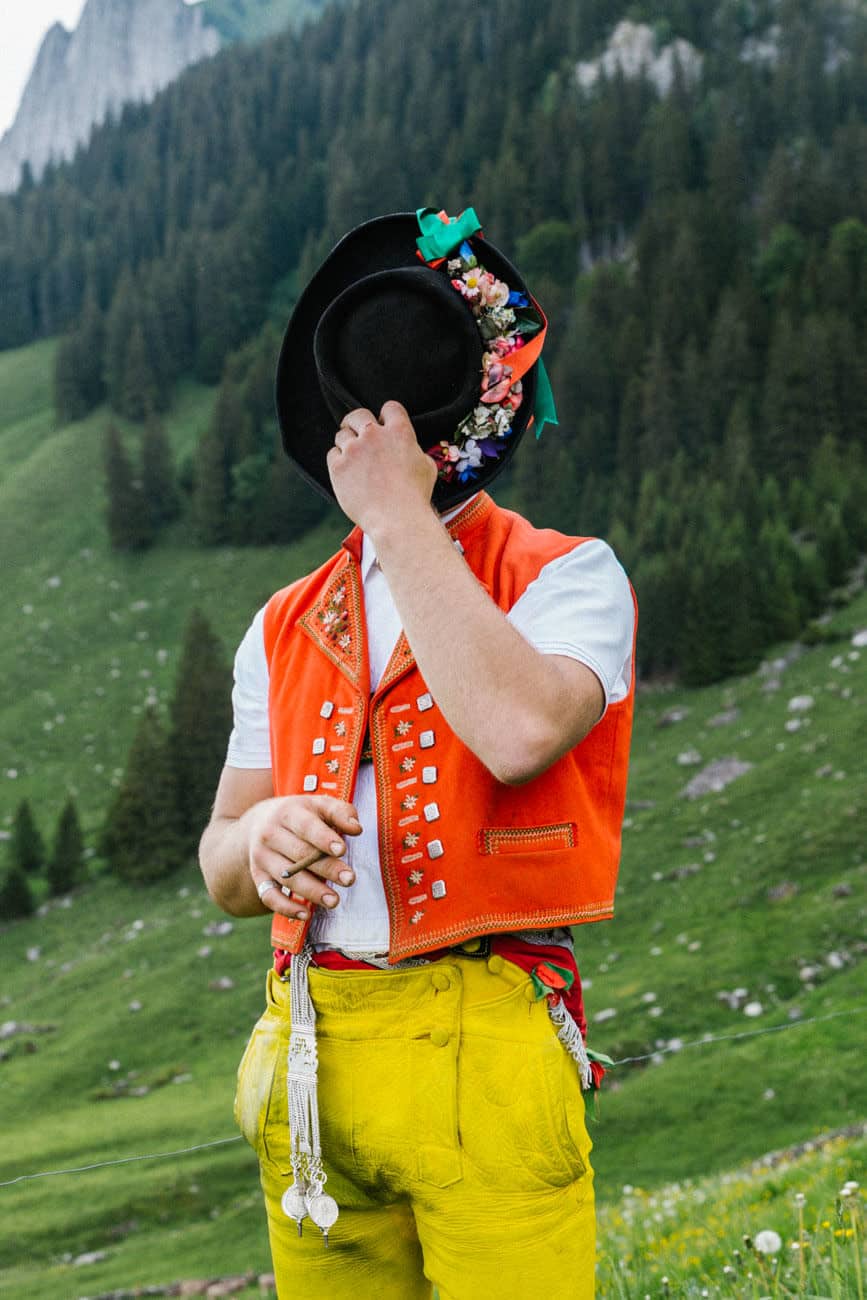
More documentary photo stories:
“So You Speak Russian” Documents a Photographer’s Uneasy Homecoming
Chasing Away the Cold at Slovenia’s Spring Carnival
The Spiritual Effects of Photographing Spain’s Ancient Pilgrimage
